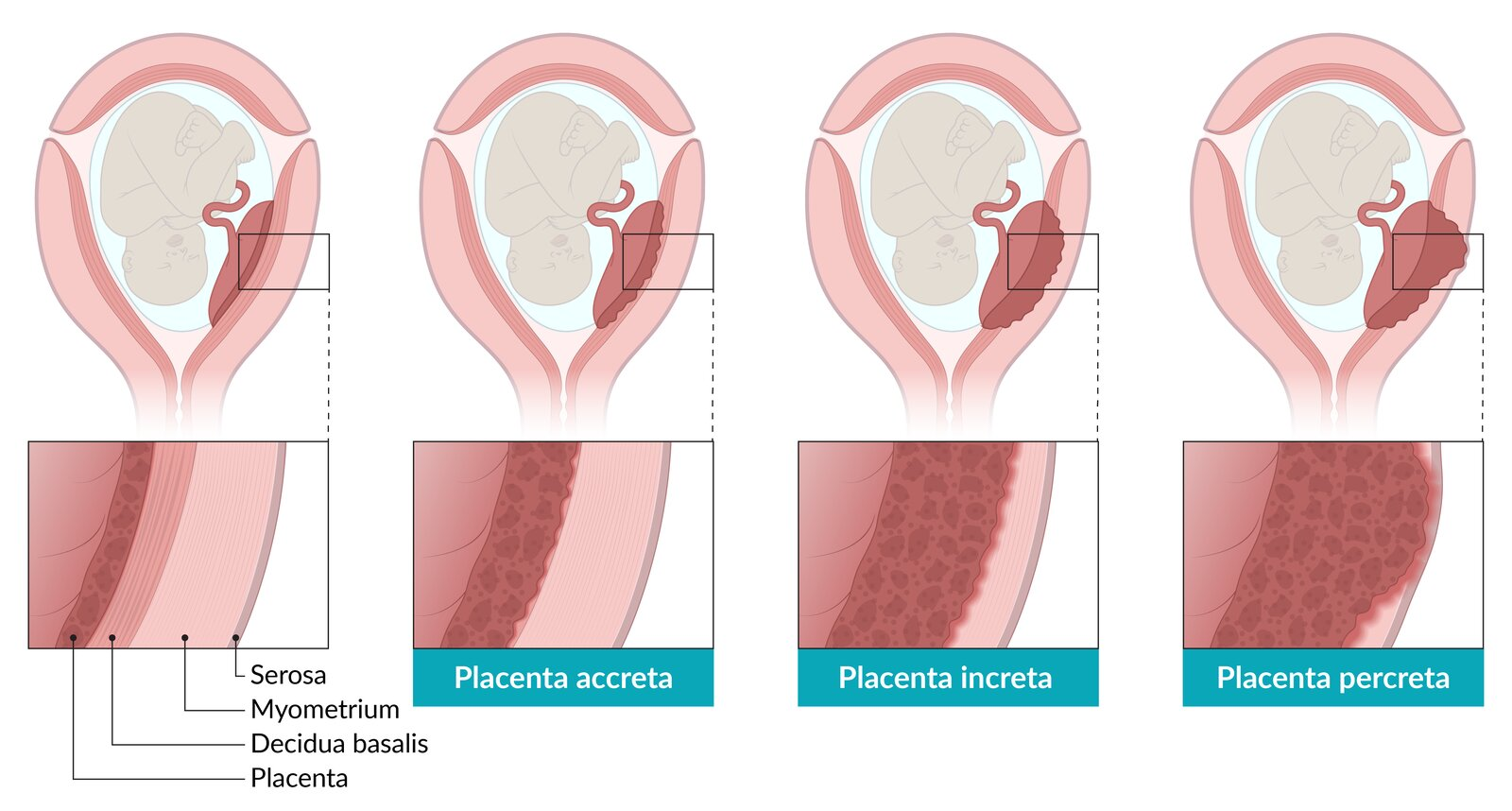Defective decidual layer of the placenta leading to abnormal attachment and separation during postpartum period
Epidemiology
Classification

- Placenta accreta: chorionic villi attach to the myometrium (but do not invade or penetrate the myometrium) rather than the decidua basalis (up to 75% of cases)
- Placenta increta: chorionic villi invade or penetrate into the myometrium (approx. 20% of cases)
- Placenta percreta: chorionic villi penetrate the myometrium, penetrate the serosa, and in some cases, adjacent organs/structures (approx. 5% of cases)
- Like bladder
Mnemonic
The types of abnormal placental attachment: Placenta Accreta “Attaches” to the myometrium, placenta Increta “Invades” the myometrium, and placenta Percreta “Perforates” the myometrium.
Pathophysiology
Risk factors
- History of uterine surgery (e.g., endometrial ablation, hysteroscopic removal of intrauterine adhesions, dilatation, curettage)
- Prior births by cesarean delivery
- Placenta previa
- Placenta previa generally manifests with placenta accreta.
- Multiparity
- Advanced maternal age
Clinical features
- Typically diagnosed after fetal delivery
- Abnormal uterine bleeding
- Postpartum hemorrhage at the time of attempted manual separation of the placenta
Diagnostics
- Ultrasound
- Thinning of uterine myometrial wall
- Placental lacunae (particularly irregularly shaped), giving the placenta a moth-eaten appearance
- Disruption of the junction between the bladder wall and uterine serosa
- Loss of clear space behind the placenta